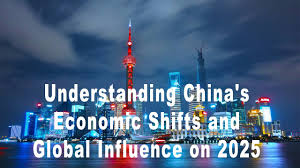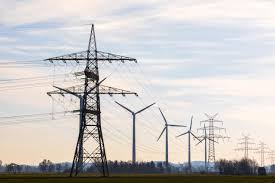China, the world’s second-largest economy, is undergoing a significant transformation with its ambitious 2025 policy reforms. These reforms aim to reshape China’s economic model, emphasizing innovation, sustainability, and global partnerships. But what do these changes mean for the rest of the world? Let’s delve into the details.
An Overview of China’s 2025 Policy Reforms
China’s 2025 policy reforms focus on achieving economic sustainability and technological self-reliance. At their core, these reforms target areas such as green energy, advanced manufacturing, and artificial intelligence. By reducing reliance on external markets and resources, China aims to become a leader in high-tech industries while addressing environmental challenges.
The reforms also emphasize urbanization and rural development. Investments in infrastructure and smart cities will ensure economic growth while promoting balanced regional development. This dual approach is intended to lift millions out of poverty and create a robust domestic market.
The Global Impact of China’s Economic Shift
China’s policy changes will undoubtedly influence the global economy. Here are some potential impacts:
1. Shifts in Trade Dynamics
China’s pivot toward domestic consumption may alter global trade flows. Traditionally, China has been a major exporter of low-cost goods. However, its focus on producing high-tech products and increasing domestic demand could shift its role in global markets. Nations dependent on Chinese imports and exports may need to adjust their trade strategies.
2. Increased Competition in Technology
By prioritizing innovation, China aims to compete with leading technology hubs like Silicon Valley and South Korea. Its investments in AI, robotics, and green tech could set new global benchmarks, posing both challenges and opportunities for tech-driven economies.
3. Environmental Contributions
China’s emphasis on renewable energy and sustainability could have far-reaching environmental benefits. As one of the largest carbon emitters, its efforts to reduce emissions could inspire other nations to adopt stricter environmental policies.
The 2025 Vision and Global Partnerships
China’s policy reforms are not an isolationist strategy. Instead, they seek to foster global partnerships through initiatives like the Belt and Road Initiative (BRI). By investing in infrastructure projects across Asia, Africa, and Europe, China is strengthening its economic ties and expanding its influence.
These partnerships will benefit emerging markets by providing access to funding and technology. However, they also raise concerns about debt dependency and geopolitical leverage.
Challenges China Faces in Achieving Its Goals
While China’s ambitions are clear, the path to success is fraught with challenges:
- Economic Slowdown: China has experienced a slowdown in GDP growth, partly due to the global pandemic and trade tensions. Maintaining momentum will require strategic planning and innovation.
- Global Relations: Strained ties with major economies like the U.S. and the EU may hinder China’s access to critical resources and markets.
- Domestic Inequality: Bridging the urban-rural divide remains a pressing issue. Achieving balanced development is essential for long-term stability.
Why the World Is Watching China Closely
China’s 2025 policy reforms are a defining moment for the global economy. The scale of these reforms ensures that their impact will be felt worldwide. International investors, policymakers, and businesses are keenly observing China’s progress, understanding that its success or failure will ripple through global markets.
For more insights on international developments and their implications, explore the international-news section, where global trends are analyzed in depth.
Conclusion
China’s economic shift through its 2025 policy reforms represents a bold step toward a sustainable and innovative future. These changes have the potential to redefine its role in the global economy while offering opportunities and challenges for other nations. By closely monitoring these developments, stakeholders worldwide can better prepare for the economic transformations that lie ahead.
China’s journey to becoming a self-reliant, green, and technologically advanced economy is a story worth following. The world waits with bated breath to see how this new chapter unfolds.






